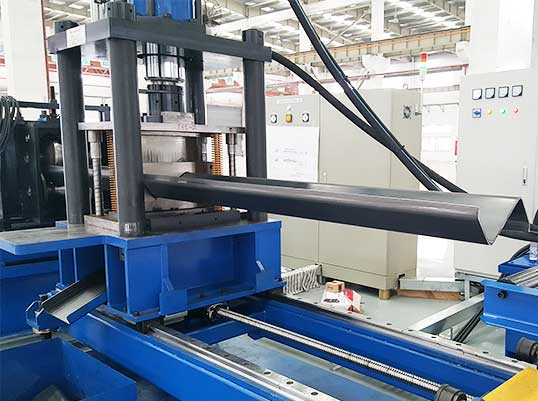Navigation Menu
Contact Us
- Email:
- info@wxavatar.com
- Address:
- Yurong Village, Yuqi Street, Huishan District, Wuxi, China.
Release Date:Jul 01, 2025 Visit:77 Source:Roll Forming Machine Factory
As solar energy systems become more prevalent, the demand for reliable manufacturing equipment has grown significantly. Solar stand roll forming machines play an important role in producing the structural components that support solar panel installations. When evaluating these machines, several technical characteristics warrant careful consideration to ensure optimal performance and long-term value.

Precision Engineering Components
Forming Station Configuration
Multiple forming stages (typically 12-24 stations) for gradual material shaping
Robust roller tooling made from hardened steel for dimensional accuracy
Adjustable station positions to accommodate different profile specifications
Material Handling System
Coil loading capacity matching production requirements
Straightening mechanisms for consistent material feed
Tension control systems to prevent material deformation
Production Capabilities
Speed and Throughput
Variable speed control for different material thicknesses
Continuous operation capability for high-volume production
Quick changeover systems between different profile runs
Material Compatibility
Capacity to process various steel grades and coatings
Adjustable tooling for different thickness ranges
Support for pre-painted or galvanized materials
Control and Automation Features
Operator Interface
User-friendly HMI with production monitoring
Programmable settings for different product configurations
Diagnostic systems for maintenance alerts
Quality Assurance Systems
Integrated measurement devices for profile verification
Automatic correction functions for dimensional consistency
Data logging capabilities for production tracking
Structural and Safety Considerations
Machine Construction
Heavy-duty frame design for vibration reduction
Precision-ground guide rails for smooth operation
Accessible component layout for serviceability
Operational Safety
Emergency stop systems with multiple access points
Guarding for moving components
Electrical safety certifications
After-Sales Support
Service Network
Availability of technical support personnel
Spare parts inventory and delivery timelines
Training programs for operational staff
Documentation
Comprehensive operation manuals
Maintenance schedules and procedures
Troubleshooting guides for common issues

Conclusion
Selecting an appropriate solar stand roll forming machine requires careful evaluation of multiple technical factors. By focusing on precision engineering, production flexibility, control systems, and reliable support structures, manufacturers can identify equipment that meets their specific operational requirements. The right machine choice contributes to consistent product quality and efficient manufacturing processes in solar support system production.